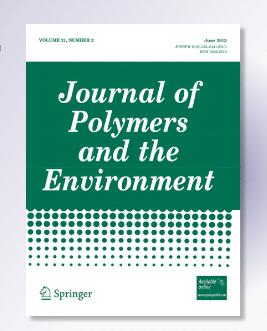Biological Production and Structural Characterization of PHB from Commercial Sugarcane Molasses
Abstract
World population growth associated with unbridled consumption have led to notable increases in the use of petroleum-based plastics. Biodegradable polymers produced from sustainable and low-cost raw materials have been emerging as a key solution. The objective of this work was to obtain a polymer of microbial origin from an alternative and renewable source. Bacterial Polyhydroxybutyrate (PHB-B) was produced by submerged culture of Cupriavidus necator using commercial sugarcane molasses (CSM) as a renewable substrate. A 22 factorial experimental design with three central point replications was conducted to identify the most favorable culture conditions. The 15 g.L−1 concentration of reducing sugar (RS) obtained from the CSM was effective as a carbon source, yielding (under stirring at 180 rpm and 30 °C) a maximum production of 35.70% PHB-B, while presenting the same functional groups and crystal structure as commercial grade Polyhydroxybutyrate (PHB-C). The intensities obtained for the 2933 and 2975 cm−1 bands, suggested that PHB-C presents higher crystallinity than PHB-B. 1H and 13C NMR confirmed the identity of the bacterial biopolymer as Polyhydroxybutyrate. The diffraction peaks were less intense for PHB-B, and the peaks at (021) and (101) coalesced into a single peak at (111). The peak shapes indicated that PHB-B presents smaller and/or less perfect crystals than PHB-C. Considering the observed structural differences, the rigidity and flexibility of the biopolymers may differ. Bacterial PHB was produced using a low-pollution route. This resulted in a product which potentially expands the range of environmentally friendly PHB applications.

 求助内容:
求助内容: 应助结果提醒方式:
应助结果提醒方式:


